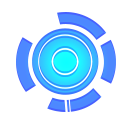Imagine that there is a magical tool in the world that makes learning 7 times more effective - faster to learn a foreign language, faster to master programming, faster to understand anything in the world.
Surprisingly, such a tool was found in 1990 by American sociologist Michael Howe. He conducted a series of tests among students and determined that the users of the "magic tool" were 7 times better at memorizing material, easily recalling facts and easily applying knowledge in practice.
Those who used the "magic tool" were head and shoulders above the average student. "Ordinary" students remembered the material worse and understood it worse, moreover, even gifted otlichnikov were weaker than those who used this "magic remedy".
That amazing tool was notes. But!
Michael Howe not only proved that taking notes dramatically improves the efficiency of learning, but also formulated rules for their use. Just following these rules leads to a 7-fold increase in learning efficiency!
Rule #1. Never write down material exactly
When you simply transcribe material into your notebook, you work like a photocopier - information goes through your head without stopping. You just slap text onto paper and think you've done useful work, but really you've only hurt yourself because you've wasted time.
Instead of copying directly, you need to think about the idea. Formulate it as you understand it and why it will be useful to you, and only then write it down in your own words.
By thinking through the material you are processing it on a deep level, you are shaping it, polishing it, and saving it in a way you are comfortable with. At least that's what your brain does when you think about the usefulness of an idea and its meaning.
This is the way to learn to the best of your ability thinking it through and writing it down in your own style. That's the "magic power" of notes.
Rule #2. Don't use a computer to take notes for the first time
In 2014, Princeton University studied 10,000 students in two categories: pen-and-notepad users and notebook users.
In all tests without exception, the students who take notes by hand won. Scientists attribute the effectiveness of the "manual" method to the fact that brush movements stimulate the cerebral cortex more than keystrokes.
That is, stronger cortical stimulation, stronger learning and memorization. So leave the computer for the future and buy yourself an expensive pen and a nice pad A4.
Rule #3. Take notes according to a special methodology, not just texting
Taking notes in solid text creates a lot of problems: in a mass of handwritten text it is difficult to find the information you need and there is no emphasis on particularly important ideas. To avoid such problems and to get rid of long searches for the necessary note, use the Cornell Method.
This method was proposed in 1940 by Walter Spider, an American professor at Cornell University. "The Cornell Method" allows you to structure information and make it easy to find and use. Its effectiveness is confirmed by the fact that 84% of Cornell University honors students consistently use the method in their studies. Here's how to use it:
The first step is to divide the sheet.
Draw a vertical line closer to the left edge of the sheet. This separates two areas-the first area for key ideas, the second area for extended explanations in your own words.

The second step is to write down the key idea.
While studying the material you come across an important rule or fact, for example, "taking notes correctly increases the effectiveness of learning by a factor of 7." You write down this key idea in the narrow left-hand column.
The third step is to write down the explanation in your own words.
In the wide right column, you write down an extended commentary:
"Notes are a learning tool, not a record of information. When we take them in our own words, we think about what is to be written. This "thinking" is the most valuable thing about note-taking. It speeds up the learning process many times over.
With the Cornell Method, your notes will look tidy. They will always be available for you to repeat and find where you need them. Any valuable knowledge will now be at your fingertips.
Rule #4. Repeat your notes at the end of your study
Well, the final rule for using notes is that after you write them down, you need to repeat them right away.
For example, you read a book about poker math and made six cool notes about card counting. You used the right principles - you thought about the counting methods and their usefulness, and you wrote them down by hand using the Cornell Method. After that, you decided to relax over a cup of tea. What is the right way to finish your work? Just close the book and go put the kettle on? No.
Before you finish, read from the beginning all the notes you just made. This will be the first and most important repetition of the material, and it will only take a minute. But this minute is the second most important secret in the whole manual.
A 2007 University of California study showed that this quick repetition of notes at the end of a class triples the retention of information the next day. This is the key to remembering everything, knowing everything and understanding more than others.
Conclusion
Imagine space flight. For an astronaut to go into space, he needs a "spacesuit" - a special suit that helps him survive in an infinite vacuum. That is, you could say that a spacesuit makes spacewalking possible.

